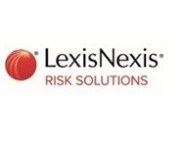Overcoming the data hurdles of self-driving vehicles

Authored by Andrew Ballard, Product Principal, LexisNexis Risk Solutions
According to The Royal Society for the Prevention of Accidents, 95% of road accidents are caused by human error, so new laws to safely roll out self-driving vehicles across the U.K. can only be good news. The level of vehicle technology in use today proves there is the capability for vehicles to operate autonomously under certain conditions and improve safety whilst also reducing emissions. In fact, through the work we have done to bring Advanced Driver Assistance Systems (ADAS) data into insurance quoting, we know that ADAS can reduce accident claims by over 30% so the potential self-driving cars offer in safety, as well as the convenience and accessibility promoted by the U.K. Government, cannot be overstated. But there are still several big data, privacy and driver education hurdles to overcome.
While it will soon become clear how self-driving vehicles must be built and behave, less clear is how insurance providers get to know the vehicle mode ‘live’ – i.e., is it in self-driving mode or being operated by the driver of the vehicle? Clearly, it is vital to know and understand what operation mode a vehicle was in should an accident occur. Linked to this is the fundamental issue of how the “authorised self-driving entity” actually bears the responsibility of full Autonomous Vehicle (AV) mode, should an accident occur. In other words, who are they and how do insurers approach and rely upon them to resolve a claim?
To make self-driving vehicles work on our roads, drivers will need to understand exactly what the capability offers and to opt in to sharing their data. For these services to be offered, the vehicle will need to be connected; and insurance providers will need detailed knowledge on the technology in the vehicle.
The added consideration highlighted by the Association of British Insurers is that consumer education must improve as well as training, helping to create familiarity with vehicle features, functions and how they operate.
The first significant steps to help the market better understand vehicle safety technology have already been taken with more and more insurance providers ingesting ADAS data into the quote process. This is a key step as the market prepares for increasing levels of vehicle autonomy. LexisNexis® Vehicle Build reveals the presence, purpose and performance of a variety of ADAS fitments at VIN level and their impact in reducing claims frequency at the point of quote.
In developing LexisNexis® Vehicle Build, we reviewed ADAS fitments from a variety of vehicle makes and models, processing millions of vehicle records. Sourcing ADAS data on behalf of the insurance industry means insurance providers can deliver more personalised services to their shared customers and support greater education around the benefits of ADAS.
But what’s really important to understand is that LexisNexis Vehicle Build has not just been designed to confirm ADAS fitment. This solution has been developed with a keen eye on the future to ultimately expose data and insight into more advanced and complex vehicles – leading to connected car and automated vehicles. Indeed, our connected car team at LexisNexis Risk Solutions is working with vehicle manufacturers to establish connections to data sources that will confirm software versions and whether or not the features can be updated over-the-air (OTA). In the future, the data available may also include real-time connected car data that could confirm the active use of any given ADAS fitment by the driver. This combination of data would enable an insurance provider to know the safety features available in a vehicle in real time and whether those features are in use or deactivated, to support pricing through to claims.
Additionally, with established connections to the DVLA registration data, we will be able to confirm if a vehicle has autonomous capability, as this must be captured at the vehicle registration point.
With appropriate technical connectivity and consumers opting into sharing their data, LexisNexis Risk Solutions is aiming to be the leading company to help manage the data hurdles of self-driving and all the data relevant to understanding a vehicle’s insurance risk. As a business focused on delivering insights to insurance providers through data, we’re already well down the road to help make self-driving vehicles insurable.
About LexisNexis
At LexisNexis Risk Solutions, we believe in the power of data and advanced analytics for better risk management.
With over 40 years of expertise, we are the trusted data analytics provider for organisations seeking actionable insights to manage risks and improve results while upholding the highest standards for security and privacy.
We enable insurers and brokers to improve decision-making, increase profitability and transform business performance with actionable insights from our data and analytics solutions. For more information, please contact risk.lexisnexis.co.uk/insurance or enquiries-info@lexisnexis.co.uk.

